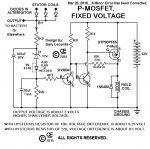vas
Well-Known Member
Paul explained the logic in his first post.
if you're 12V you would need a smaller R. What value did you use btw? get a 50 and a 100 and try them (but get BIG BUGGER resistors not the typical 1/4W tiny ones, or if you use them for a test, make sure you don't let the bulb on for more than 10-15secs...
Definitely one end of the resistor on the one cable where the bulb fits, the other on the other side.
I have a somewhat empirical knowledge of electrics, cannot explain (nor have the time to try to elaborate right now I'm afraid)
cheers
V.
if you're 12V you would need a smaller R. What value did you use btw? get a 50 and a 100 and try them (but get BIG BUGGER resistors not the typical 1/4W tiny ones, or if you use them for a test, make sure you don't let the bulb on for more than 10-15secs...
Definitely one end of the resistor on the one cable where the bulb fits, the other on the other side.
I have a somewhat empirical knowledge of electrics, cannot explain (nor have the time to try to elaborate right now I'm afraid)
cheers
V.



